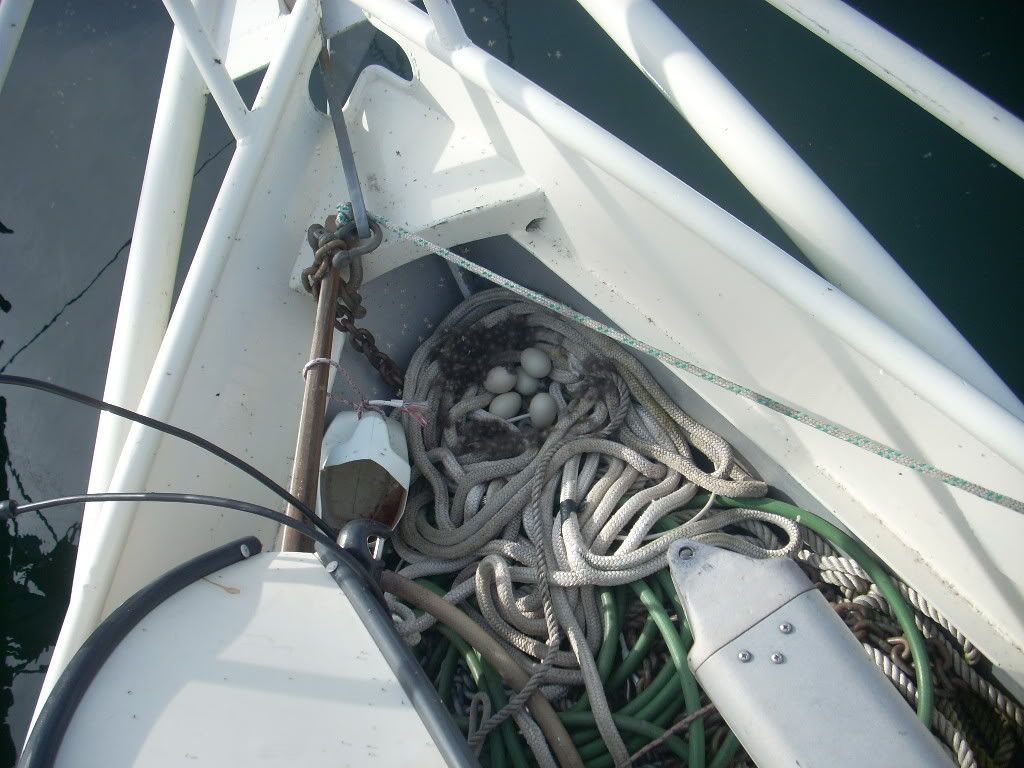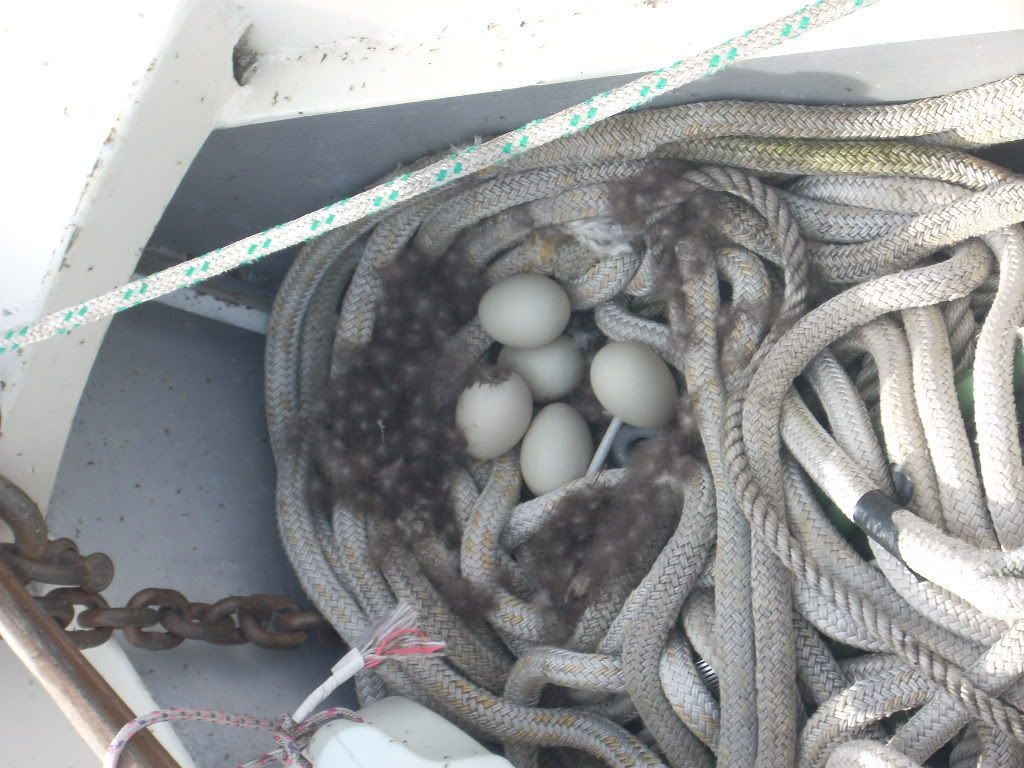After a winter fraught with family trouble, loads of work and, even for Canada, ridiculous amounts of work-suspending weather, we got the vessel launched. The engine is disconnected at the moment, awaiting further ministrations with a sabre saw to get the pilothouse roof off. The original owner, apparently convinced that 40-odd SS bolts, nuts and washers didn't quite do the trick, put a bead of what I assume is 5200 or some equally tenacious sealant around the inward steel flange of the pilothouse.
This means it isn't coming off easily. The insulation and ceilings and cherry battens and wiring came
apart easily, but the roof itself? Not so much. Hence the sawing.
And why do I wish to do this? Well, the engine's coming out for "prophylactic servicing". More exciting than it sounds, really, it will just be a complete going-over to determine what damage, if any, 20 years of minimal usage (and winterizations of unknown skill) has done to the engine...if anything...and to remedy it. Because I wonder rather pay a mechanic a few thousand today in Canada than to throw a rod in Fiji once I start running the thing several hundred hours per year. Currently, it has 1,300 hours on it...in 20 years, this is nothing for a diesel...and I've put on 200 hours in the last two years. So out she comes, and to do this, off comes the roof.
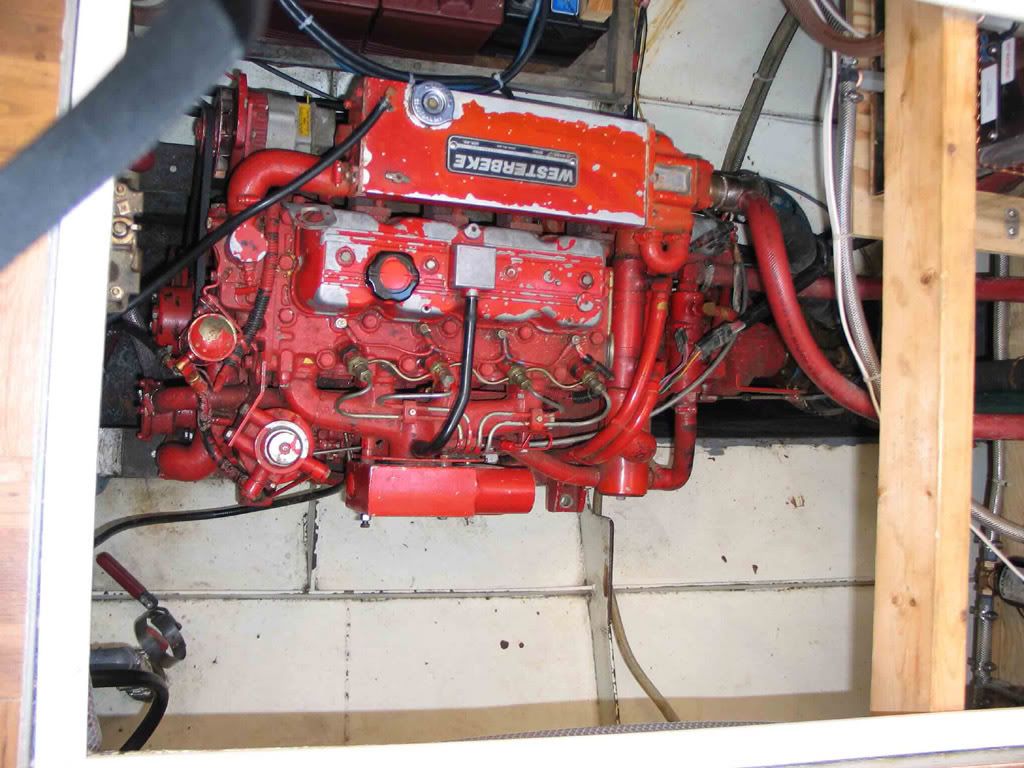
The roof needs to come off anyway, because the 2 x100 gallon stainless steel tanks slung under the side decks are coming out in favour of 4 x 50 gallon HDPE tanks I will secure to the frames about a metre lower down in the hull. This will "stiffen" the boat a fair bit, I believe, as well as will taking a currently unused 40 gallon SS former holding tank under the engine and using it as a diesel "day tank" containing only heavily filtered diesel from my soon-to-be-installed FilterBoss dual Racor set-up.
And I haven't even vouchsafed my latest plot for the Herculean battery banks....
Yes, it's not about what you do on boats, it's the order in which you do them. Basically hauling out the middle of the boat allows a lot of rationalization of the plumbing, tankage and probably the last opportunity to lay down thick coats of paint in very dark corners.
Speaking of rationalization, behold the ten-foot Portabote.
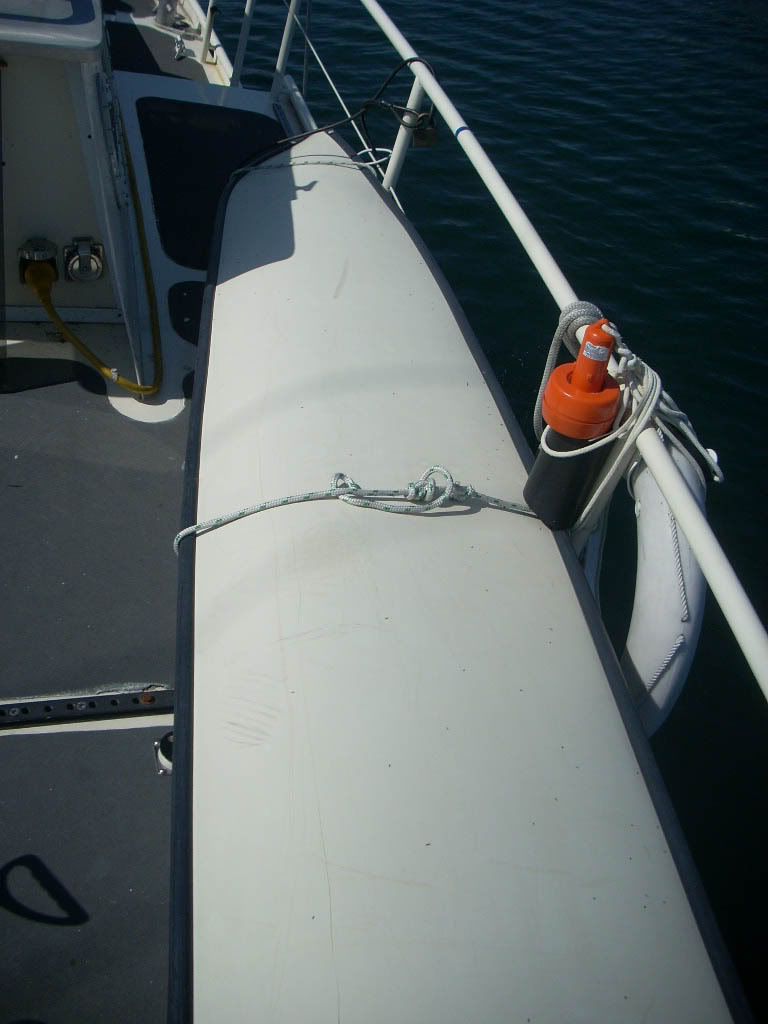
Looks like a surfboard, doesn't it? Well, it cleverly becomes, in a fashion that resembles origami but with considerably more grunting, a reasonable rowboat of some 55 pounds/24 kg. in weight.
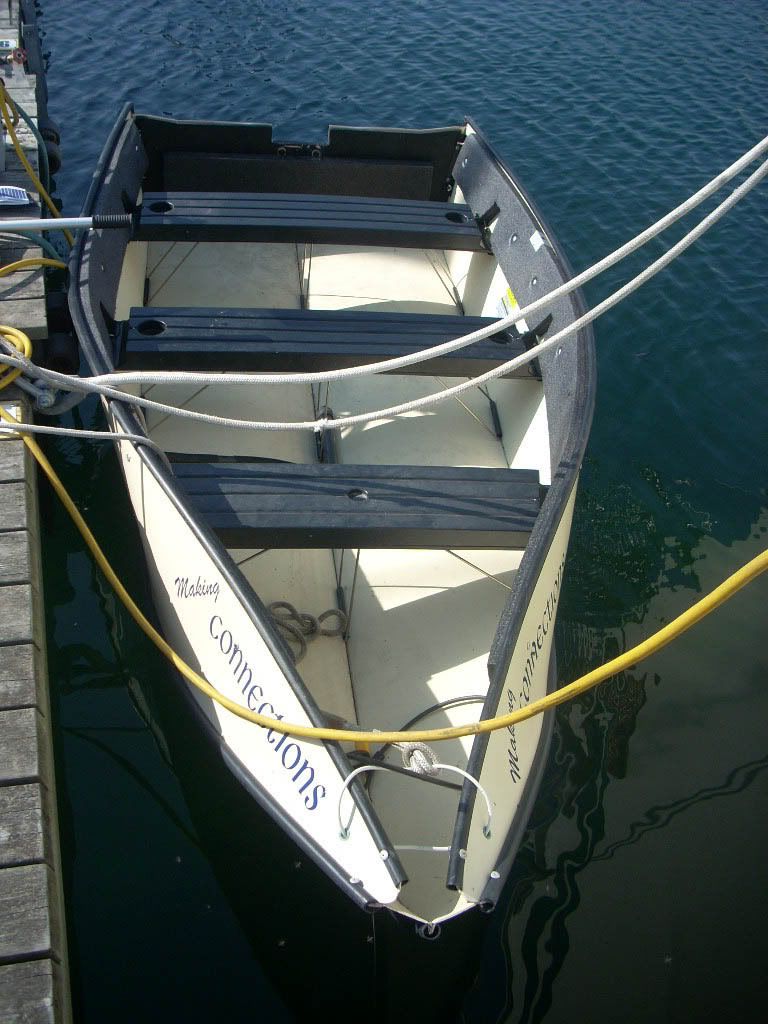
When appended with the little Honda 2HP seen below, it goes about five knots hither and yon on a few tablespoons of gasoline. It will be our "cargo tender", and the rather more handsome nesting dinghy below will be our "people tender" for when we just want to row in or have a quick sail. Having two tenders, both reducible in size, made more sense than the standard Zodiac-style RIB or even an old-salt-approved rowing dinghy of the Fatty Knees type. My wife has to lift this gear solo for it to make sense, really, and that means thinking a bit more deeply about our off-boat transport.
A last and unexpected bonus was that the Portabote is pretty close in colour to
Alchemy's livery.

The name of the tender is the previous owner's; the new name was selected by my wife, while my son decided to name the nesting dinghy. Me, I designed the logos that will shortly adorn them.
 |
| I like bad puns and I cannot lie. |
